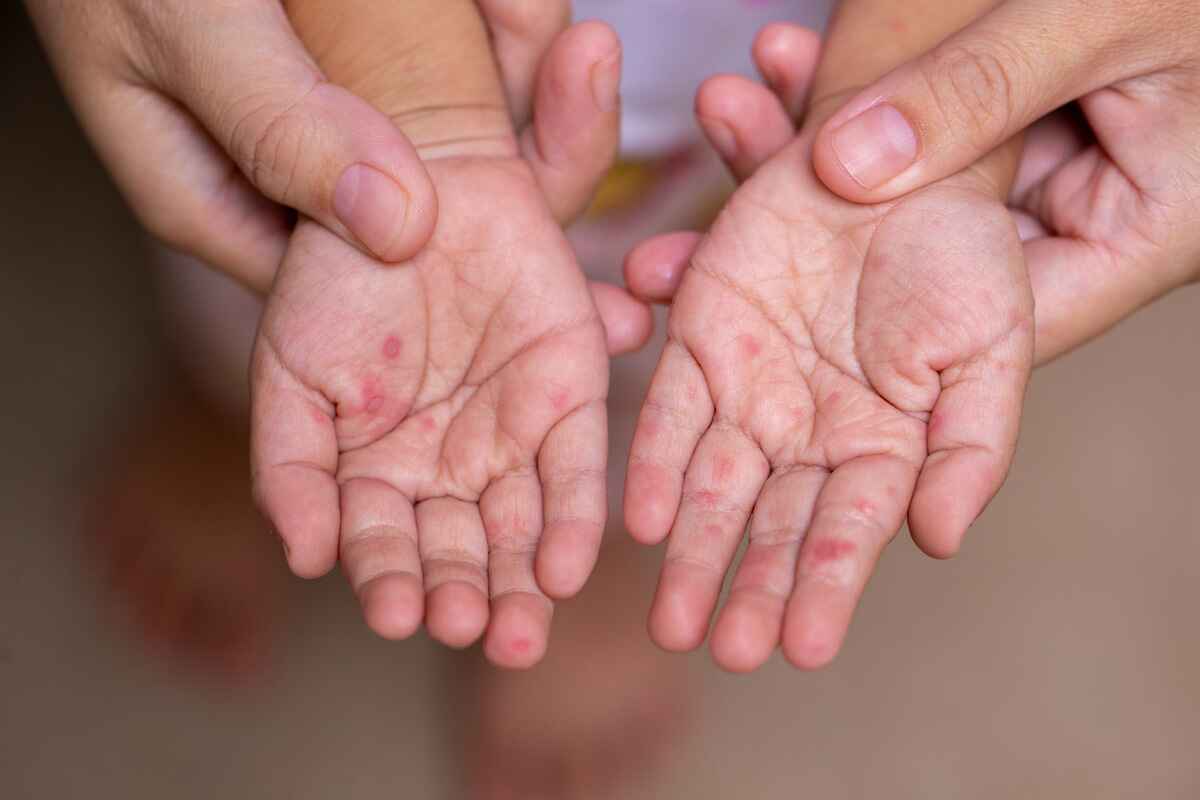
A red bumpy rash on a child's palms.
When cold and flu season kicks into high gear, it can be hard to tell what’s causing a child’s sore throat or runny nose. Yet one of the most common illnesses to circulate this time of year comes with a telltale rash. Hand, foot and mouth disease is spread by the highly contagious coxsackievirus.
Hand, foot and mouth symptoms
Common symptoms can include:
- Small sores or blisters inside or around the mouth
- Sores or blisters on the hands, including the palms
- Sores or blisters on the feet, including the soles
- Rash appearing in the diaper area
- Low grade fever
- Cough
How is hand, foot and mouth spread?
One of the ways it can spread is through respiratory secretions. For example, a baby can drool on toys, rub their nose or their mouth, and transfer it to another child. The virus can also spread through fecal matter for many weeks after symptoms resolve.
“Especially in daycares, good hand hygiene is really necessary, because if you're diapering many, many children, then sometimes it can be spread that way,” said Northeast Medical Group pediatrician Elizabeth Dieckman, MD. “In addition, it can shed virus directly from the rash.”
Hand, foot and mouth typically impacts young children under 5, but parents and other adult caregivers can get it as well. Because it is caused by a viral infection, there is no treatment or targeted medication that can cure it. Instead, caregivers should focus on providing relief for symptoms such as giving acetaminophen or ibuprofen to alleviate a fever and general discomfort.
“For some kids, the rash looks horrible and they feel fine. They’re active, they’re energetic and bouncing around,” said Dr. Dieckman. “The big thing we worry about is when you have the oral lesions, it will hurt to drink and so kids can get dehydrated.”
To help soothe irritation, avoid feeding kids spicy and acidic foods like citrus. Instead provide plenty of fluids, cold foods and dairy like yogurt, ice cream and ice pops which can be soothing.
How long is hand, foot and mouth contagious?
Patients are the most contagious during the first week of illness. Sometimes weeks after infection, kids will experience peeling on their fingertips, toes or nails but Dr. Dieckman says that’s not a sign of reinfection. It’s just a reaction to having had the virus.
To help prevent transmission, pay attention to items used by other people. Wash down or sanitize high touch areas and toys. Avoid sharing items with other kids if they have lesions on the hands and never swap pacifiers, straws or water cups.
Good hand hygiene is equally important, especially after diaper changes. While it’s possible for kids to get hand, foot and mouth again with another viral strain, practicing good infection prevention measures will be important for families all winter long.





